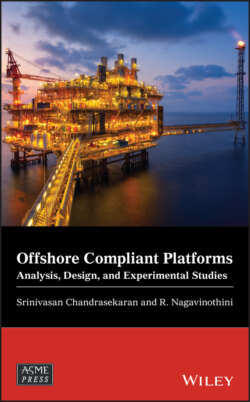Читать книгу Offshore Compliant Platforms - Srinivasan Chandrasekaran - Страница 11
Foreword by Dr. Atmanand N.D.
ОглавлениеThe use of renewable energies is vital for addressing issues due to global warming and climate change. But the cost of production of renewable energy has not hit an all‐time low as yet, and oil and gas continue to be the major sources of energy.
In the recent past, offshore oil drilling and production platforms have begun moving toward ultra‐deep water due to the depletion of oil and gas resources near shore. In addition, the arctic region is opening for new offshore platforms. This necessitates a novel geometric form with reduced response to extreme waves and, in turn, the extreme loading conditions that prevail in ultra‐deep water. Compliant offshore platforms are highly popular due to their form‐‐dominant design characteristics. However, their significant hull motion in deepwater conditions and high sea conditions leads to a need for alternate design procedures, because the present ones are not suitable for ultra‐deep water. Detailed analysis and design procedures for new‐generation offshore platforms are frequently debated in conference proceedings. But this book demystifies the technological know‐how by presenting a lucid explanation that is useful and innovative. For example, the discussion of a new methodology for the dynamic analysis of a triceratops under ice loads in ice‐covered regions, with detailed parametric studies, is noteworthy. Such structures are prone to accidental loads arising due to fires and ship–platform collisions, so both designers and researchers should be familiar with the detailed dynamic analysis under such loads. The comprehensive picture presented in this book of the dynamic response behavior of this novel platform under different types of loads is scarce elsewhere in the literature.
This book will serve as a resource for understanding the basic structural behavior of new‐generation complex offshore platforms and will help graduate students understand analysis methodologies that otherwise would have to be painstakingly collected from many publications. In addition, this book will be useful for practicing engineers and research scholars who wish to understand the response behavior of structures with novel geometry under combinations of extreme loads.
The principal author, Srinivasan Chandrasekaran, is a well‐known academician and has authored 14 textbooks in the highly specialized area of offshore engineering. His web‐based courses on offshore structural engineering are very popular and serve as reference material to teach this complex subject at both the undergraduate and post‐graduate levels of engineering programs in various disciplines including civil, mechanical, aerospace, naval architecture, etc. I am sure any offshore engineer will find this book to be a wealth of resources.
Dr. Atmanand N.D.
Director, Chair IOCINDIO (UNESCO)
National Institute of Ocean Technology
Chennai
India
